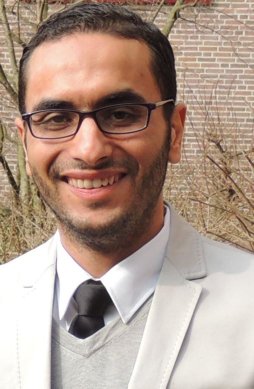Crustal and upper mantle structure of Botswana: is Botswana rifting?
 Our knowledge of the Earth’s crust and upper mantle is derived largely from geophysical observations (e.g., seismology, gravity, etc.). Constraining the physical conditions of the outer layers of the Earth is crucial to improving our fundamental understanding of the part that directly influences our societies. This will help us to predict and mitigate the challenging geohazards e.g., earthquakes and volcanoes. Moreover, it will increase our capability of targeting and extracting the natural resources.
Our knowledge of the Earth’s crust and upper mantle is derived largely from geophysical observations (e.g., seismology, gravity, etc.). Constraining the physical conditions of the outer layers of the Earth is crucial to improving our fundamental understanding of the part that directly influences our societies. This will help us to predict and mitigate the challenging geohazards e.g., earthquakes and volcanoes. Moreover, it will increase our capability of targeting and extracting the natural resources.
Despite the exponentially increasing volume of high-quality geophysical data emerging from dense seismological networks, wide regions, including Africa, still suffer from the lack of seismological coverage. Moreover, the lack of seismological data restricts our ability to fully exploit the state-of-the-art potential field data from recent satellite missions e.g. GOCE. This is due to the dependency of potential field data on seismological models as crucial a priori information. This thesis focuses on these two components; the first is to bring insight into the crustal and upper mantle structure of Botswana that is poorly covered by seismological studies, and the second investigates two methodological developments to integrate seismological and gravity data.
In the first part of the thesis, the crustal and upper mantle structure of Botswana was investigated using new data from the recently deployed NARS-Botswana temporary seismological network. Receiver function technique was used to derive the crustal thickness map of Botswana. Moreover, surface wave tomography from ambient noise and earthquakes was used to derive the 3D shear wave velocity structure of Botswana’s lithosphere. The results showed three distinctive features:
1) the deep sedimentary basins, 2) the extension of the East African Rift System (EARS) in the upper mantle and 3) the cratonic blocks. The Passarge and Nosop basins have a remarkable low-velocity signature in the crustal structure of Botswana that extends deeper than 10 km. At the upper mantle, the EARS appears as the lowest shear wave velocity anomaly in Botswana at the northern border with a thin crustal thickness. Low-velocity expressions extend from the EARS until the borders of the Kalahari and Congo cratons. Moreover, the low-velocity extensions seem to corrode the margins of the cratons by low-velocity finger-like structures. The low-velocity expressions penetrate the crust at weak zones causing noticeable earthquake activity at the Okavango Rift Zone and the border of the Kaapvaal Craton. The extensional mechanisms of the earthquakes, and especially the large 6.5 Mw earthquake of April 3, 2017, suggest rifting in both areas with a possible connection through central Botswana that is supported by the thin crust and high Vp/Vs ratio. The Kaapvaal and the Zimbabwe cratons show high shear velocities and deep keels that extend deeper than 200 km depth. Two deep cratonic roots are observed in the northwest at the margin of the Congo Craton and in the southwest at the Rehoboth Province. The margin of the Congo Craton shows a deep cratonic keel as well, which extends deeper than 200 km depth. The cratonic root at the Rehoboth Province supports the presence of a buried microcraton.
In the second part of the thesis, we introduced two different strategies to integrate seismological and gravity observations. The object-based approach is a good option in case of the availability of 3D seismic velocity models from regional or local observations. The approach gives the opportunity to extract the 3D subsurface structure from any available 3D seismic tomography model in a semi-automatic way. This provides a reproducible and robust extraction process that reduces the subjectivity of the interpretation of the 3D subsurface models. The extracted objects can be later inverted for their density contrast using a linear least-square inversion scheme. However, the estimated density contrasts resulting from the inversion are sensitive to minute variations in the 3D model. This suggests that the density contrasts of the objects should be constrained by boundary values that can be derived from the seismic velocities using empirical relations or mineral physics using thermodynamical modelling based on Gibbs free energy minimization. The second strategy is based on jointly inverting seismological and gravity observations. we developed a novel approach that, for the first time, enable the joint inversion of seismic surface wave and the GOCE gravity gradients. The approach showed promising results using synthetic models. Further application using real data will open the door to derive new generation of lithospheric models that can image both density and seismic velocities by combining GOCE and seismological data.
To summarize, this thesis brings insight into the crustal and upper structure mantle of Botswana. The updated crustal thickness map and the 3D shear wave velocity model provided a crucial knowledge about the extension of the East African Rist System, the distribution of the cratonic segments, and the extent of the sedimentary basins. Moreover, the two developed approaches to integrate seismological and gravity information open the door to exploit the full potential of the state-of-the- art GOCE gravity data. We hope that the new findings and the developed approaches will help us to better understand the geodynamics of Africa and facilitate the imaging of the density structure of the Earth.
